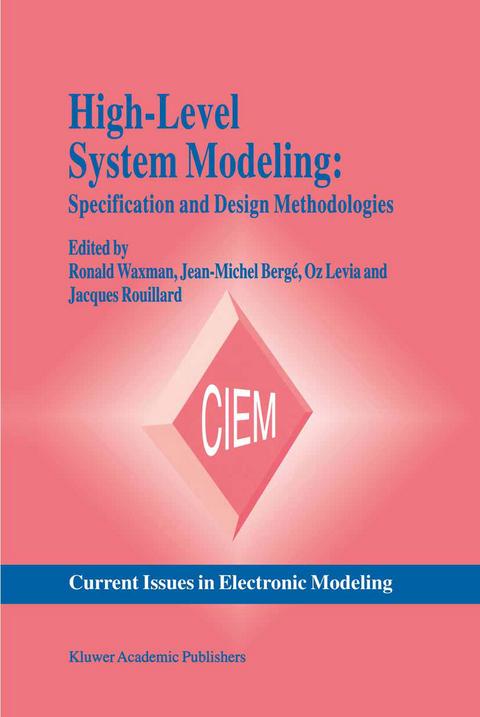
High-Level System Modeling
Springer-Verlag New York Inc.
978-1-4612-8561-8 (ISBN)
Specification modeling (linking object/data modeling, behavior modeling, and activity modeling).
Operational specification modeling (modeling the way the system is supposed to operate - from a user's viewpoint).
Linking non-functional parameters with specification models.
Hybrid modeling (linking performance and functional elements).
Application of high-level modeling to hardware/software approaches.
Mathematical analysis techniques related to the modeling approaches.
Reliability modeling.
Applications of High Level Modeling.
Reducing High Level Modeling to Practice.
High-Level System Modeling: Specification and Design Methodologies describes the latest research and practice in the modeling of electronic systems and as such is an important update for all researchers, design engineers and technical managers working in design automation and circuit design.
1. A System Specification Model and Method.- 1.1. Introduction.- 1.2. Overview of the Development Process.- 1.3. Objective, Nature and Quality of a Specification.- 1.4. Related Models and Methods.- 1.5. Essential Concepts for Specification.- 1.6. Model for Functional Specification.- 1.7. Object and Data Modeling.- 1.8. Activity Modeling.- 1.9. Behavioral Modeling.- 1.10. Specification of Performance Constraints.- 1.11. Technological Specifications.- 1.12. Specification Method.- 1.13. Expressing Functional Specifications.- 1.14. Specification Method applied to an Example.- 1.15. Specific Features of the Specification Model.- 1.16. Conclusions.- 2. Adept: A Unified Environment for end-to-end System Design.- 2.1. Introduction.- 2.2. The ADEPT Environment.- 2.3. Examples and Results.- 2.4. Conclusions.- 3. The Design Cube: A Model for VHDL Designflow Representation and Its Application.- 3.1. Introduction.- 3.2. Design and Modeling.- 3.3 The Y-Chart Model and VHDL.- 3.4 The Design Cube.- 3.5 Nodes in the Design Cube.- 3.6. Arcs in the Design Cube.- 3.7. An extension of the model.- 3.8. Applying the Design Cube to the Current Synthesis Technology.- 3.9. Conclusion and Future Work.- 4. A Novel Approach to Guiding Incremental Specification.- 4.1. Introduction.- 4.2. Problem Formulation.- 4.3. Solution.- 4.4. Example.- 4.5. Results.- 4.6. Elaborate Theory for the Identification of Refining Edges.- 4.7. Conclusion.- 5. An Expert Assistant for Hardware Systems Specification.- 5.1 Introduction.- 5.2 The Module Manager and the MODES Environment.- 5.3 The Module Manager and the CSIF Format.- 5.4 The Module Manager Architecture.- 5.5 The Knowledge Representation of the Module Manager.- 5.6 Conclusion.- 6. Integrating Non-Functional Aspects into Lotos.- 6.1. Introduction.- 6.2. Non-Functional Extensions.- 6.3. An Example.- 6.4. Properties of the Annotations.- 6.5. Conclusion.
| Reihe/Serie | Current Issues in Electronic Modeling ; 4 |
|---|---|
| Zusatzinfo | XVI, 192 p. |
| Verlagsort | New York, NY |
| Sprache | englisch |
| Maße | 160 x 240 mm |
| Themenwelt | Mathematik / Informatik ► Informatik ► Theorie / Studium |
| Informatik ► Weitere Themen ► CAD-Programme | |
| Technik ► Elektrotechnik / Energietechnik | |
| ISBN-10 | 1-4612-8561-5 / 1461285615 |
| ISBN-13 | 978-1-4612-8561-8 / 9781461285618 |
| Zustand | Neuware |
| Haben Sie eine Frage zum Produkt? |
aus dem Bereich


